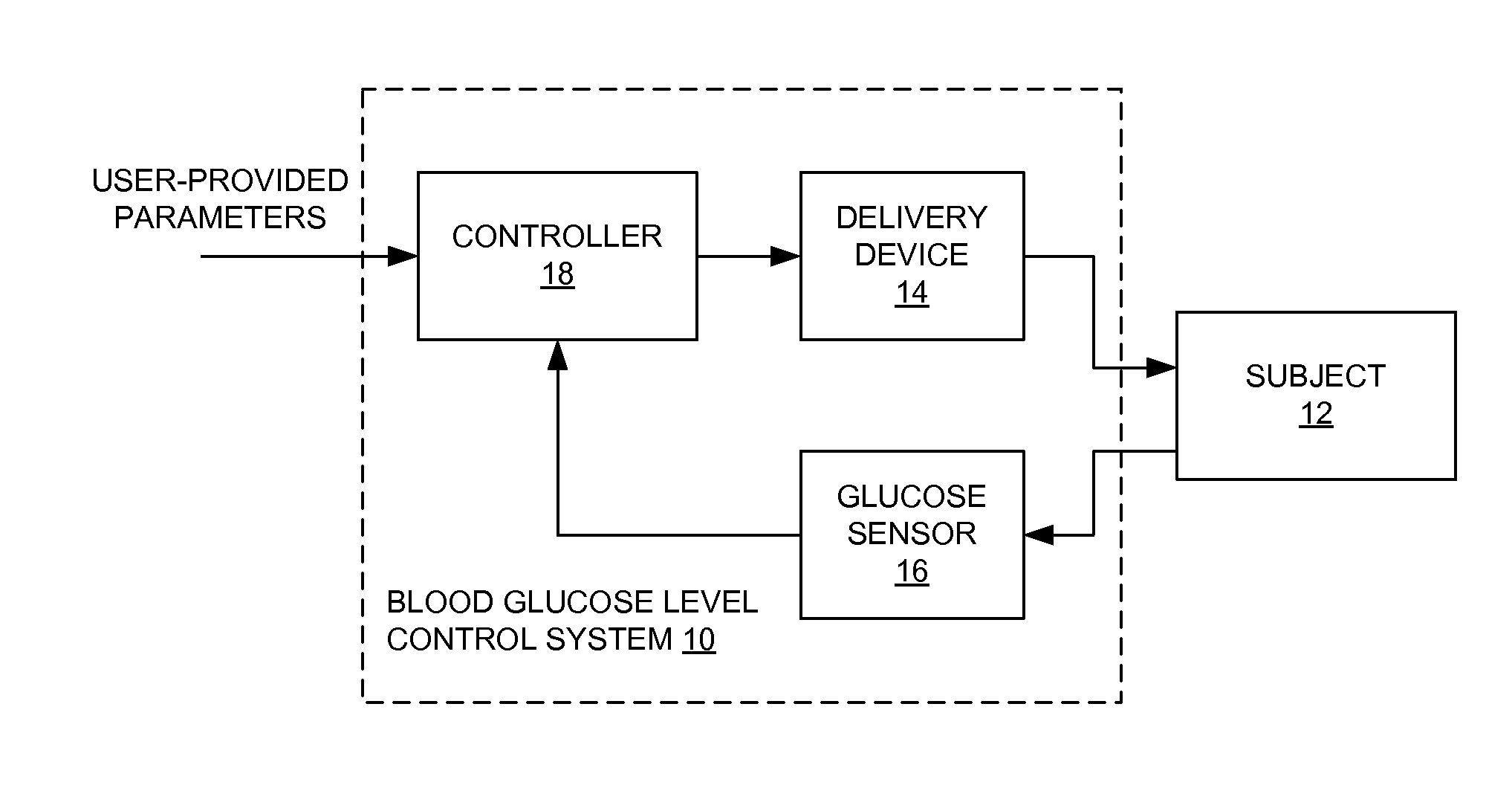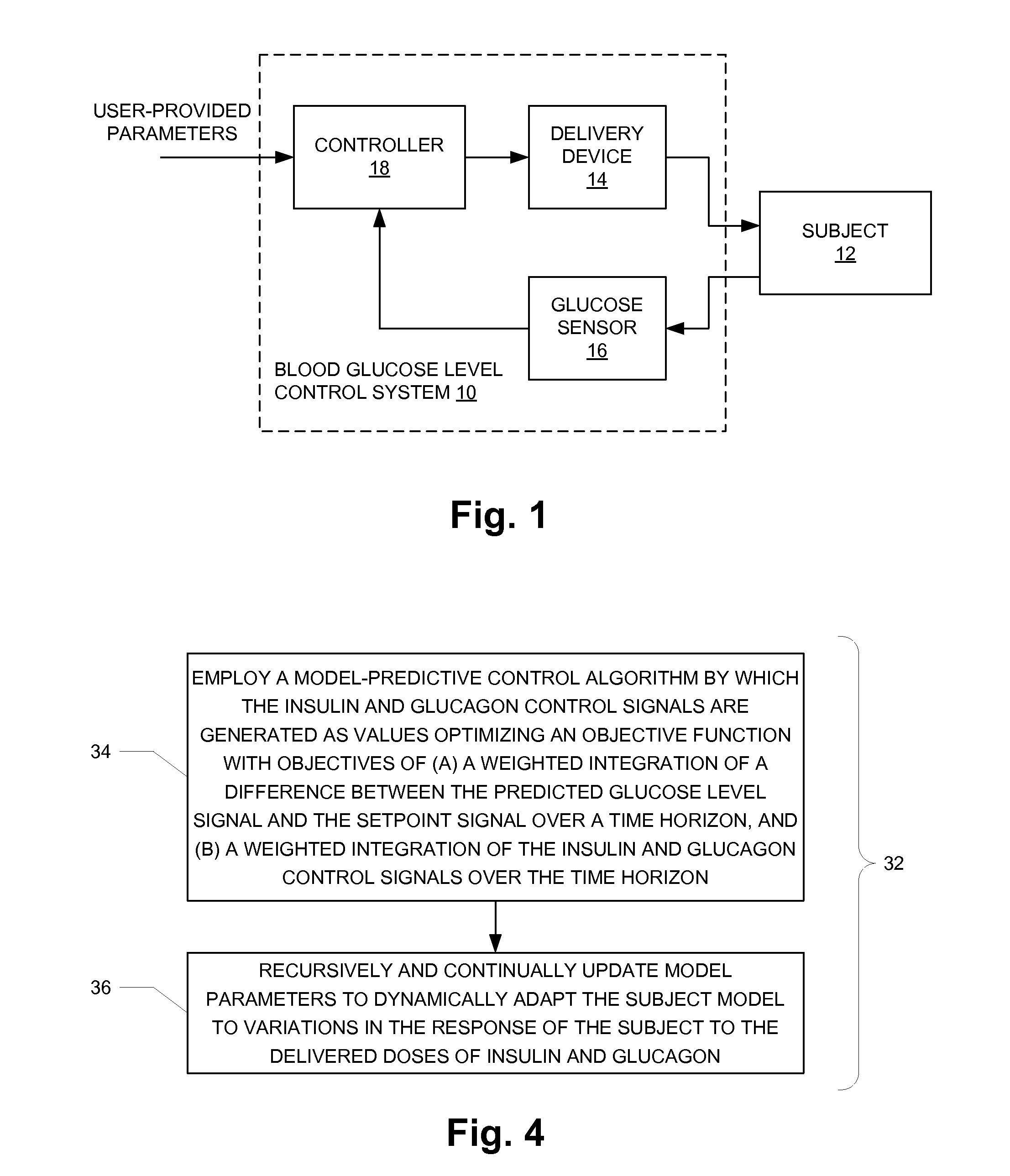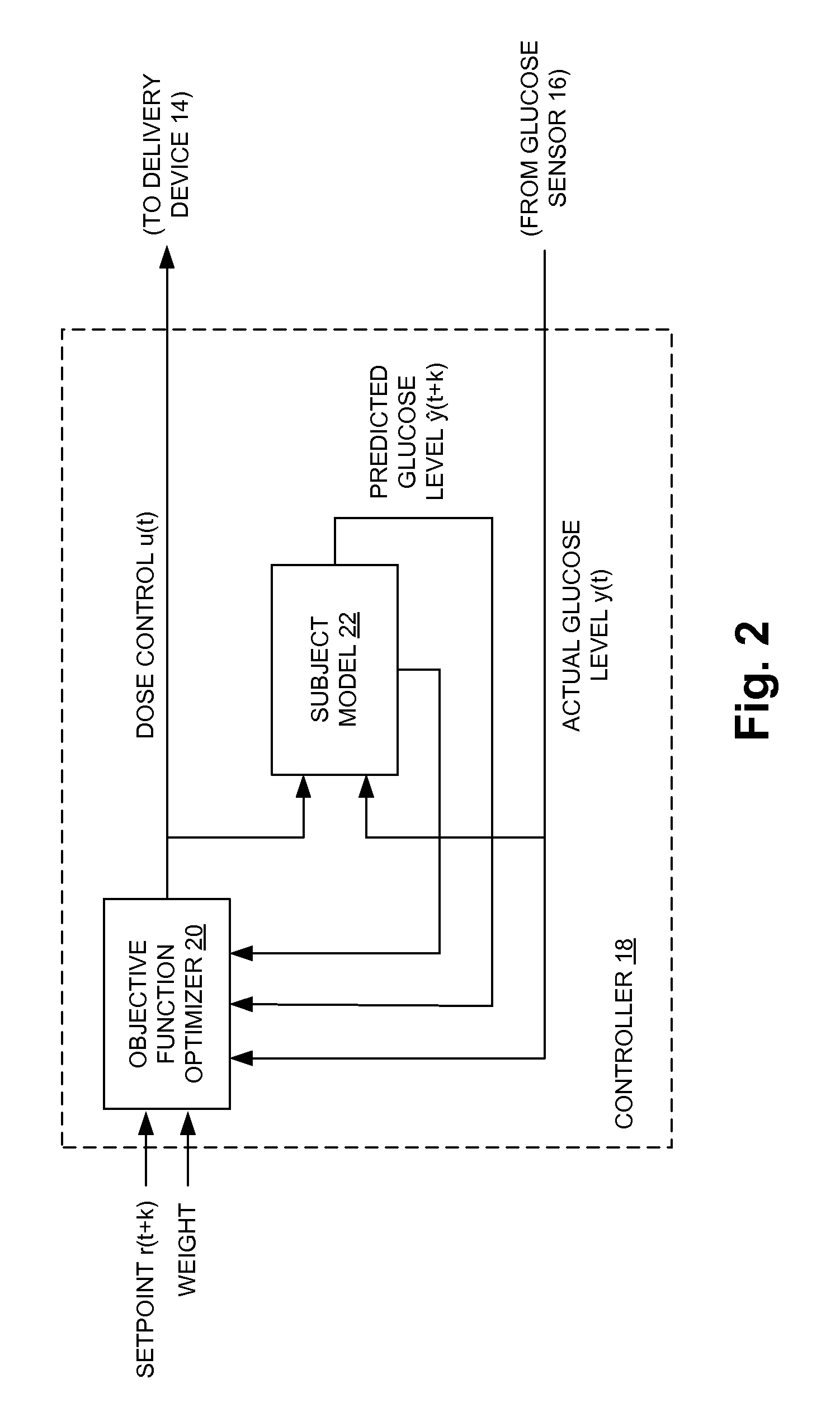Fully automated control system for type 1 diabetes
a control system and fully automated technology, applied in the direction of ict adaptation, drug composition, metabolic disorder, etc., can solve the problems of low glucose level, debilitating and deleterious consequences, brain damage and paralysis, etc., to improve blood glucose levels, avoid complications of hyper- and hypoglycemic conditions, and reduce burdens
- Summary
- Abstract
- Description
- Claims
- Application Information
AI Technical Summary
Benefits of technology
Problems solved by technology
Method used
Image
Examples
Embodiment Construction
[0011]FIG. 1 illustrates an automated control system 10 for regulating the blood glucose level of an animal subject (subject) 12, which may be a human. The subject 12 receives doses of insulin from a delivery device 14, which may be an infusion pump coupled by a catheter to a subcutaneous space of the subject 12 for example. As described below, the delivery device 14 may also deliver a counter-regulatory agent such as glucagon for more effective control of blood glucose level under certain circumstances. In the present description, reference is made to glucagon specifically, but it is to be understood that this is for convenience only and that other counter-regulatory agents may be used. For the delivery of both insulin and glucagon, the delivery device 14 is preferably a mechanically driven infusion mechanism having dual cartridges for insulin and glucagon respectively
[0012]A glucose sensor 16 is operatively coupled to the subject 12 to continually sample a glucose level of the sub...
PUM
 Login to View More
Login to View More Abstract
Description
Claims
Application Information
 Login to View More
Login to View More - R&D
- Intellectual Property
- Life Sciences
- Materials
- Tech Scout
- Unparalleled Data Quality
- Higher Quality Content
- 60% Fewer Hallucinations
Browse by: Latest US Patents, China's latest patents, Technical Efficacy Thesaurus, Application Domain, Technology Topic, Popular Technical Reports.
© 2025 PatSnap. All rights reserved.Legal|Privacy policy|Modern Slavery Act Transparency Statement|Sitemap|About US| Contact US: help@patsnap.com



